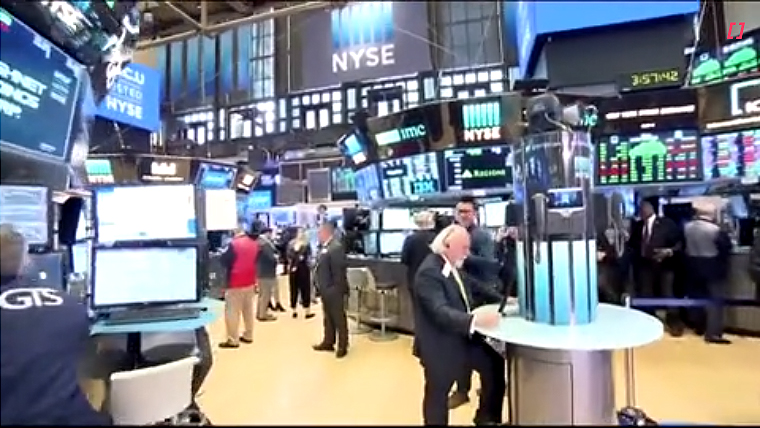
Another day of light news sees further market consolidation. The NZD has outperformed, pushing up towards 0.5950 and it is higher on the crosses. The US 10-year rate has pushed higher after trading at a fresh six-week low yesterday afternoon.
This week is living up to its billing of being uneventful, as the lack of newsflow continues. Traders are anticipating what Powell might say when he appears on a panel at an IMF Conference at 8am NZ time, but it’s hard to imagine any different message from what he gave last week after the FOMC announcement.
In trading yesterday afternoon, the US 10-year Treasury yield got down to 4.47%, below the level in the aftermath of last week’s soft payrolls report, but since then it has been grinding back higher and currently sits at 4.57% up 9bps from the NZ close. The curve has steepened, with a milder grind higher in the 2-year rate. There have been a number of Fed speakers overnight, but none of them capturing the market’s attention with any insightful comments. European 10-year rates are up about 3bps for the day.
After eight consecutive up days, the S&P500 has been in and out of positive territory and is currently flat, with a few hours of trading left in the day. For the trivia buffs, a positive close would make it the longest winning streak since 2004 (and ten straight positive session haven’t been seen since 1995). The Euro Stoxx 600 index closed up 0.8%. After two days of chunky falls cumulating towards 7%, Brent crude has recovered close to 1%, trading back above the USD80 per barrel mark.
In economic news, US initial jobless claims were 217k last week, in line with expectations, and consistent with a lift in the trend over recent weeks, but still far from indicating that the labour market is in any serious trouble. Yesterday, China inflation data showed the economy in a state of deflation, with lower food prices dragging the CPI back into negative territory, at minus 0.2% y/y and PPI deflation extending a touch to minus 2.6% y/y. The data will keep the pressure on the government to continue with its incremental easing in monetary and fiscal policy.
BoJ Governor Ueda spoke at an FT Conference and outlined a very cautious approach to unwinding the Bank’s ultra-easy policy stance, viz “When we normalise short-term interest rates, we will have to be careful about what will happen to financial institutions, what will happen to borrowers of money in general and what will happen to aggregate demand…it is going to be a serious challenge for us.” His views were in line with previous sourced media reports, which suggest a softly, softly approach to policy adjustments, one that could keep the yen under pressure for some time yet. USD/JPY has range traded around the 151 level over the past 24 hours.
For no obvious reason, the NZD has modestly outperformed, trading to a high just shy of 0.5955 overnight and not far off that level as we go to print. The AUD trades close to the level as at this time yesterday, at 0.6410, consolidating the weakness seen after the RBA’s dovish hike earlier in the week, and seeing NZD/AUD push up to 0.9260.
The NZD is stronger on all the other key crosses as well, although this sees NZD/GBP and NZD/EUR simply unwind weakness over the prior day. NZD/JPY is edging up towards the 90 mark, a level it only briefly broke through at the end of September, so that will be the level to watch.
In the local rates market, the government bond tender showed strong demand for the nominal bonds issued, with high bid-cover ratios and pricing 2-3bps through prevailing mids. The lack of an anticipated syndication deal for long-bonds this side of Christmas has left the market short, and has played a role in compressing NZ-global rate spreads this month, in addition to the soft NZ data backdrop. The 10-year NZGB fell 9bps to 5.01%, after a brief look below 5%, and extending the fall seen through November to 55bps. The swaps curve showed slightly milder falls, with the 2-year rate down 1bp to 5.25% and the 10-year rate down 8bps to 4.89%.
In the day ahead, soon after we go to print, Fed Chair Powell will be on a panel at an IMF conference, so expect to see some reiteration of last week’s messages on the policy outlook. At its Statement on Monetary Policy, the RBA will be publishing its full suite of economic projections that support its decision earlier in the week to hike rates. On the data calendar, the NZ manufacturing PMI, UK GDP and University of Michigan consumer sentiment and inflation expectations will be published. UK GDP is expected to show a 0.1% q/q contraction in Q3.




We welcome your comments below. If you are not already registered, please register to comment.
Remember we welcome robust, respectful and insightful debate. We don't welcome abusive or defamatory comments and will de-register those repeatedly making such comments. Our current comment policy is here.